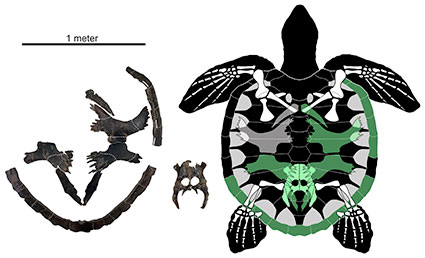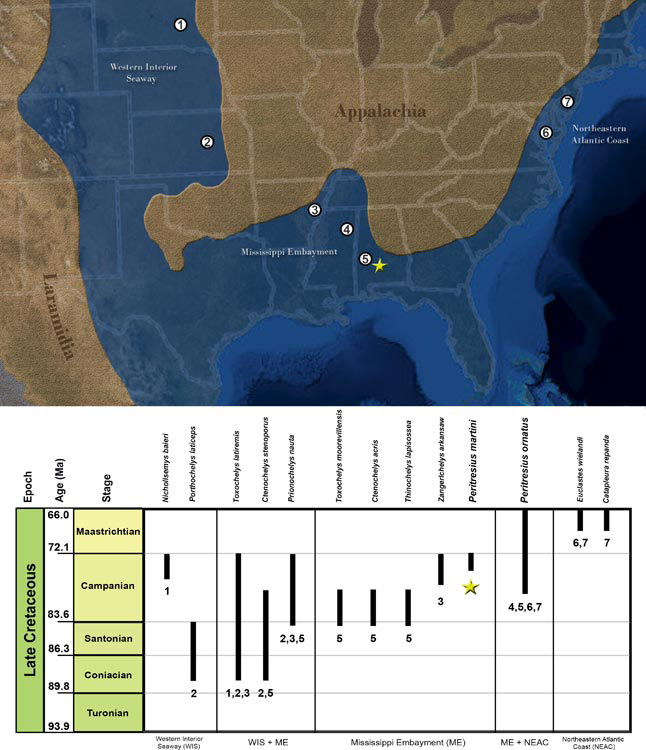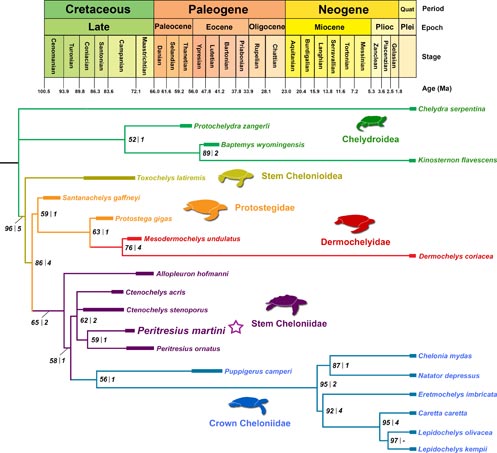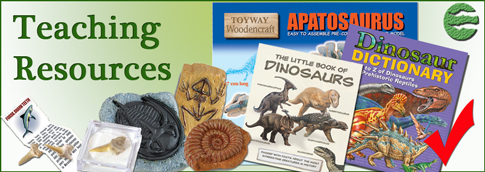Missing Link in Sea Turtle Evolution Identified in New Study
Peritresius martini – Missing Link in Sea Turtle Evolution
Peritresius martini is a newly described Late Cretaceous prehistoric turtle. It provides a missing link in sea turtle evolution.
Tortoises, terrapins and turtles, collectively classified into the Order Testudines (sometimes referred to as the Chelonii), are a very ancient group of reptiles. They were around before the crocodilians and the dinosaurs. Surprisingly, not that much is known about the evolutionary origins of extant species, but newly published research by the University of Alabama at Birmingham, has identified an important missing link in the lineage leading to modern sea turtles.
A new species of Late Cretaceous sea turtle has been named and described in a paper published in the academic on-line journal “PLOS One”. The turtle, which had a shell more than a metre in diameter, has been named Peritresius martini. The turtle’s name honours amateur fossil collector and retired scientist George Martin, who discovered the specimen in Lowndes County, Alabama and donated the fossil to the Alabama Museum of Natural History (Tuscaloosa, Alabama).
The Known Fossil Material Ascribed to Peritresius martini

Picture credit: University of Alabama at Birmingham
In the picture (above), the known fossil elements are shown including elements from the carapace, the plastron and the pelvic girdle (centre image). The fossil bones have been superimposed (in green) onto a line drawing showing a life reconstruction of the marine turtle.
Drew Gentry, lead author of the research and a PhD student at the University of Alabama at Birmingham stated:
“This discovery answers several important questions about the distribution and diversity of sea turtles during this period of time. It provides further evidence that Alabama is one of the best places in the world to study some of the earliest ancestors of modern marine turtles.”
Alabama During the Late Cretaceous
The new species of sea turtle (P. martini), swam in the shallow waters off the coast of Appalachia between 73 and 70 million years ago. It has been compared to the extant (Chelonia mydas), the green sea turtle, that can be found off the coast of Alabama today.
Alabama in the Late Cretaceous and Fossil Turtle Discoveries

Picture credit: PLOS One
Biostratigraphy and paleobiogeography of Late Cretaceous chelonioid species of North America. Localities and taxon ranges for fossil occurrences key:
1). Nichollsemys baieri – a sea turtle from the Bearpaw Formation of Canada dating from the Late Campanian.
2). Porthochelys laticeps – a sea turtle from Kanas that lived during the Coniacian through into the Santonian faunal stages of the Late Cretaceous.
3). Toxochelys latiremis – a sea turtle known from western Kansas with a wide temporal distribution ranging from around 88 – 73 million years ago.
4). Ctenochelys stenoporus – known from central Alabama.
5). Prionochelys nauta – from the Mooreville Chalk Formation of Alabama.
6). Toxochelys moorevillensis – from the Late Santonian and the Early Campanian which was named in 1953.
7). Ctenochelys acris – closely related to C. stenoporus, graduate student Drew Gentry published a study that proved that C. acris was a valid species. To read more about this research: Graduate Student Unlocks the Secrets of Sea Turtle Evolution.
8). Thinochelys lapisossea – from the Selma Formation of Alabama.
9). Zangerlchelys arkansaw – a sea turtle from the Marlbrook Marl Formation of Arkansas.
10). Peritresius martini – the newly described sea turtle from the study.
11). Peritresius ornatus – a closely related marine turtle species to P. martini that was first named and described in the mid-19th Century.
12). Euclastes wielandi – a primitive sea turtle dating from the Late Maastrichtian faunal stage of the Cretaceous.
13). Catapleura repanda – a Late Cretaceous (Maastrichtian faunal stage), turtle associated with Greensand marine deposits of New Jersey.
Commenting on the contribution of George Martin, Drew Gentry said:
“Professional palaeontologists often spend a great deal of time in laboratories performing the in-depth research necessary to properly study extinct species. Almost every palaeontologist would love to spend more time in the field looking for fossils. But, without people like George Martin, many of the most significant fossil specimens ever found in Alabama would still be buried in the dirt.”
Peritresius martini – A Fortuitous Fossil Find
This important marine turtle fossil discovery happened by chance as George Martin explained;
“Finding this fossil turtle was largely happenstance as I stopped to look at the rock strata exposed by the stream. I found a fragment of the turtle shell embedded in the marl and returned to the spot several times over the next year to recover fragments of the turtle as they were uncovered by the stream.”
However, without the skull and limb bones, the appearance and habits of P. martini can only be speculated upon. The scientists have no information on what it fed upon, how it moved or whether this turtle was a creature of the coastal seas or deeper water. The discovery of this new species of Peritresius helps to fill a gap in the Stem Cheloniidae, a group of ancient sea turtles that are related to the majority of sea turtles found today.
A Timeline of Turtle Evolution

Picture credit: PLOS One
Everything Dinosaur acknowledges the help of a University of Alabama at Birmingham press release in the compilation of this article.
Visit the Everything Dinosaur website: Everything Dinosaur Website.


